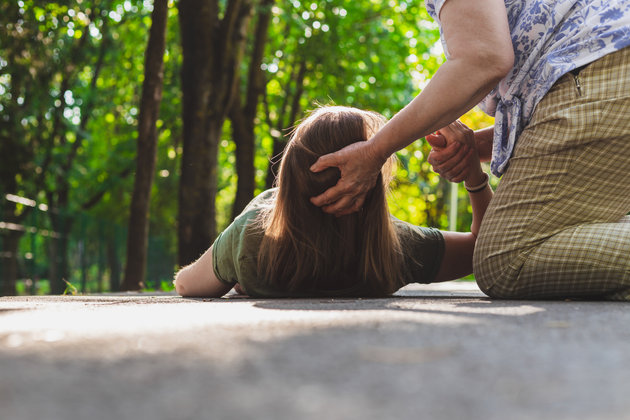What to Do in Case of Fainting in Children?
Fainting, which is a loss of consciousness caused by reduced blood flow to the brain, can occur due to simpler reasons such as fatigue, as well as serious health problems. Anadolu Health Center Pediatric Neurology Specialist Assoc. Prof. stated that as the patient lies down during fainting, the blood flow to the brain increases and consciousness regains more quickly. Dr. Sinan Çomu: “With this feature, fainting is like an insurance for the brain. If a fainting patient or child is held upright to prevent them from falling, blood flow will become more difficult and may cause conditions such as convulsions and rolling eyes. Therefore, the patient should be placed in a lying position. Additionally, fainting may be a symptom of anemia, debility due to chronic disease, or some serious psychological conditions. “When the first fainting occurs, a pediatrician, cardiologist or pediatric neurologist should evaluate it,” he said. Assoc. Dr. Sinan Çomu gave important information on the subject…

Do not try to keep the fainting person upright!
Fainting, which is a loss of consciousness caused by reduced blood flow to the brain, can occur due to simpler reasons such as fatigue, as well as serious health problems. Anadolu Health Center Pediatric Neurology Specialist Assoc. Prof. stated that as the patient lies down during fainting, the blood flow to the brain increases and consciousness regains more quickly. Dr. Sinan Çomu: “With this feature, fainting is like an insurance for the brain. If a fainting patient or child is held upright to prevent them from falling, blood flow will become more difficult and may cause conditions such as convulsions and rolling eyes. Therefore, the patient should be placed in a lying position. Additionally, fainting may be a symptom of anemia, debility due to chronic disease, or some serious psychological conditions. “When the first fainting occurs, a pediatrician, cardiologist or pediatric neurologist should evaluate it,” he said. Assoc. Dr. Sinan Çomu gave important information on the subject…
Situations that cause sudden blood loss, vagal nerve reflex in cases of fear or seeing blood, excessive excitement, standing for long periods of time, especially in hot and stuffy environments, sudden movements when hungry, standing up suddenly during weak periods of the body, urinating while standing, and in rare cases, combing hair. Fainting may occur in children as a reflex. Usually, before fainting, symptoms such as a slight feeling of faintness, nausea, blurred vision or tinnitus may be observed. Seconds after these sensations, also called “presyncope”, if the blood flow to the brain has not improved, loss of consciousness, that is, fainting, occurs. To prevent fainting, it would be a good idea to ignore the blackout, dizziness or tinnitus that may occur for a few seconds before fainting, sit down briefly, and continue moving after you recover. Of course, it is also important to maintain the body’s general nutritional and fluid balance.
What to do if the child faints?
During fainting, the patient must first be placed in a lying position. If it is thought that he has something in his mouth, it is better to lie on his side. Elevating the legs and moving the patient to an airy and comfortable environment also facilitates recovery of consciousness. Refreshing with water or cologne and drinking a sugary liquid after regaining consciousness also help. In case of ongoing unconsciousness, the patient should be transported to the nearest health institution, preferably by ambulance. Keeping the patient standing to avoid falling is a mistake that prolongs fainting and causes a seizure-like appearance.



